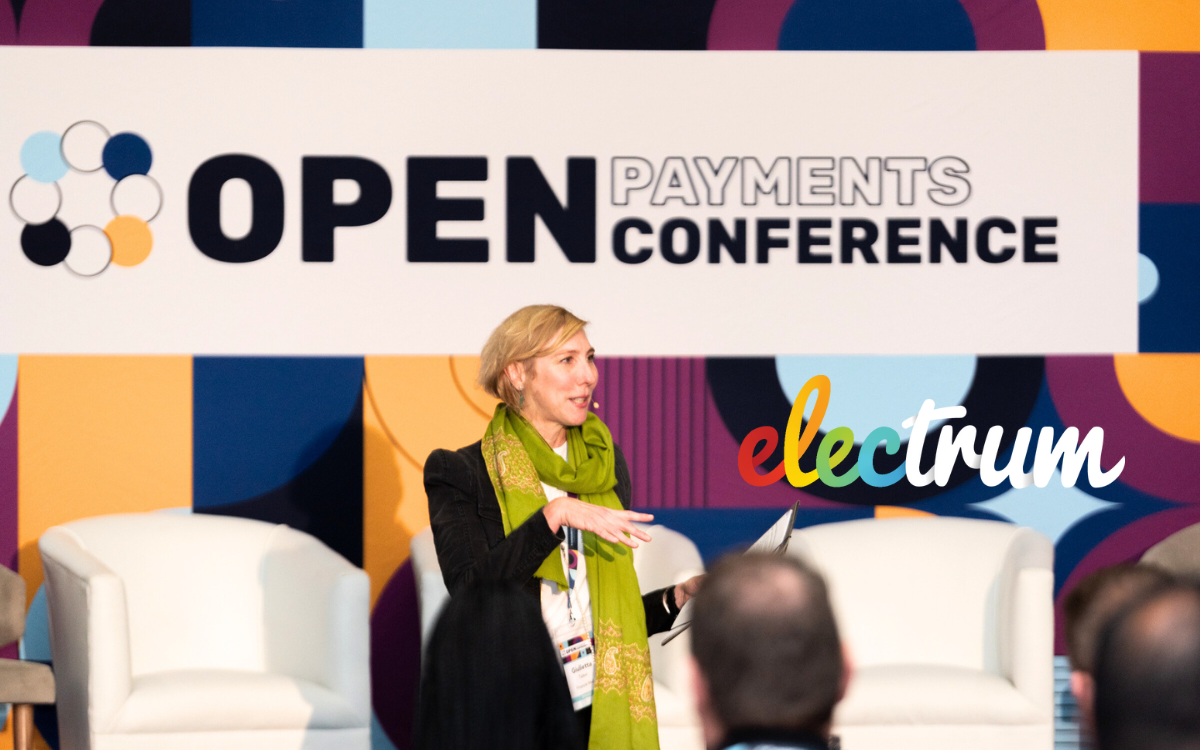
After acting as Master of Ceremonies at the recent 2023 Open Payments Conference, Giulietta Talevi from the Financial Mail shares her views on open payments, cash, financial inclusion, and the current state of South Africa’s payments landscape.
The payments industry, you could say, loves an acronym. Like most technology, it has its own language (a point driven home by the South African Reserve Bank’s own extensive glossary at the back of its Vision 2025 paper on the sector).
I find myself repeating a sort of mantra ahead of Electrum’s July conference on open payments: “RTP, RTGS, Rails, Interoperability, Frictionless …”
“You see - you know everything there is to know about payments” jokes one of the speakers at the pre-event dinner.
Clearly, however, these buzzwords are not going to get me far, especially not in understanding how banks, retailers and fintech operators are going to produce the meaty content of the SARB’s Vision 2025, a regulatory nudge towards cheap and accessible payments that go beyond the traditional bank-clearing-house-bank mechanism of moving money between parties.
So it comes as something of a revelation when another guest helpfully takes me aside and tells me what open payments are really about: the digital version of handing over a R20 note to pay for whatever it is you’re buying. The trick, he says, is to make that digital process as easy (ah - frictionless!) as pulling a wad of cash out of your pocket.
Talk about a lightbulb moment - followed by no small degree of awe in contemplating how you build such systems, and then convince people to use them. And clearly, we need convincing. Compared with our counterparts in India and Brazil, as Electrum CEO Dave Glass will point out at the Conference, we are but a fraction into the process of widespread digital payment adoption.
Specifically, if you look at South Africa and India, the numbers are both sobering, and exciting: India has 20 times SA’s population, ten times its GDP and a multiple of our almost-non-existent economic growth rate. It also has a fraction of registered taxpayers - only 67 million out of a population of 1.4 billion, compared to SA’s 26 million of roughly 60 million inhabitants.
In many ways, it speaks to the similarity of our wealth distribution - which, in SA’s case, has meant a huge unbanked population that continues to exist in a cash society, outside of formal financial channels.
This is masterfully illustrated by one of the retailer executives at the event, who reveals that 93% of his company’s transactions at present are made using cash.
“I don’t know about payments,” he says, but “if you want to design a request-to-pay transaction that’s going to work at our tills, please include us, because you’re going to foul our tills up!”
Yet what one banker will describe as the “war on cash” is understandable given the risks and costs associated with physical money - although those costs are not always obvious to South Africans who cannot understand the fees deducted from their bank accounts - small as they may be.
To others, like “Ma Pat”, a Flash vendor described during the conference, the risk of cash is huge; in her case, her bank, where she deposits her takings, is 3km away. Imagine regularly walking that distance with as much as R18 000 concealed in your underwear…
This risk follows cash into the retail world - how many stores suffer armed robberies each day? The effects of this go further as staff need counselling and stores need to be closed. When we think about the risk of payments, we need to think about it in the context of what happens in cash.
The ultimate aim of the Reserve Bank’s Vision 2025 initiative - which is to ensure “seamless, instant, safe and cost-effective payments” backed by a modern payment system - is financial inclusion, which it argues will better drive economic growth.
Dirk Ehlers, in his foreword to Electrum’s research report, Modernised Payments in South Africa, argues that financial inclusion is not limited to having a bank account and access to payments; it’s having an electronic store of value that consumers can use to make electronic payments - which creates “an electronic footprint of the person’s financial activity, something that transacting with cash does not do.”
But the retailer makes clear that financial exclusion is still the real state of affairs in SA, and if, in his firm’s example, 93% of transactions are in cash, a financial record is still a rare phenomenon.
This is the backdrop to the launch earlier this year of PayShap, a BankservAfrica initiative, backed by a cohort of banks including Standard Bank, Nedbank, FNB and Absa, followed by Discovery and Capitec. The idea was to allow customers to make bank-to-bank payments that clear in real-time, using their phone number as a reference.
But while PayShap is probably strongly associated with banks, payments, as one of the keynote speakers at the conference makes clear, is not banking.
Consider India where the majority of consumers don’t use a banking app; instead, the most popular digital payment means is an app called UPI. It begs the question: whose payment app is going to prevail in South Africa? And can any bank or payments provider manage a potential surge in volumes if open payments finally take off?
SA this year will do about 300 million real-time transactions over clearing house BankservAfrica, while India will likely do a staggering 120 billion - about 400 times our volume. Normalised for GDP, says Glass, that means that SA could grow real-time payments 40 times on the basis of present economic activity alone.“I think given our GDP we could be doing a billion PayShap transactions a month,” says Glass.
Are we ready for such a leap in volumes? Glass is doubtful, and says: “I don’t want to be the person standing around the boardroom table telling the CEO: sorry, I can’t grow this business at the moment because core banking can’t cope.”
Still, for the time being, that surge in adoption looks somewhat unlikely. And the main reason is probably cost. The instant payment options offered by participating banks are hardly cheap, and that’s a problem - for the industry, and the regulator, which is still loathe to take a prescriptive tack on the payments issue. Understandably, too, banks as commercial organisations want to cling onto what have been, until now, pretty lucrative revenue streams.
As one executive says of the banking industry in the Modernised Payments in South Africa research report: “as much as they want to align with the visions of the country, they have to make sure that everyone’s being paid and they have to show the correct bottom-line values.” Tricky.
We are clearly not yet at the point where we can’t afford not to use instant payment options as they are on offer now. As Glass points out, it is the cost of not having something that will drive the adoption of a product. If, at present, consumers can still easily pay using traditional methods - ie cash - then there’s still not much incentive to change behaviour.
For the retailer, his industry “is all about scale and efficiency.”
“You invest, operate for less and then bring prices and margins down and grow sales - that’s the way retail works. The reason we do that is if your margins are too high - people will come for you.”
“Too high” is where margins remain in SA’s traditional payments system, too. So: who is coming to disrupt this party? Perhaps, come the next Open Payments Conference, we’ll have a better idea.
Follow us on LinkedIn to continue the discussion around open payments and payments modernisation in South Africa.

Giulietta Talevi
Giulietta Talevi was the Master of Ceremonies at the 2023 Open Payments Conference. She is a seasoned financial journalist and the Money and Investing Editor at the Financial Mail. She also hosts Stock Watch on Business Day TV, where she began her career in 2001, reporting on companies and markets, as well as the broader economy.
Electrum Newsletter
Quarterly insights and news to help you keep up with the latest changes in the payments landscape







